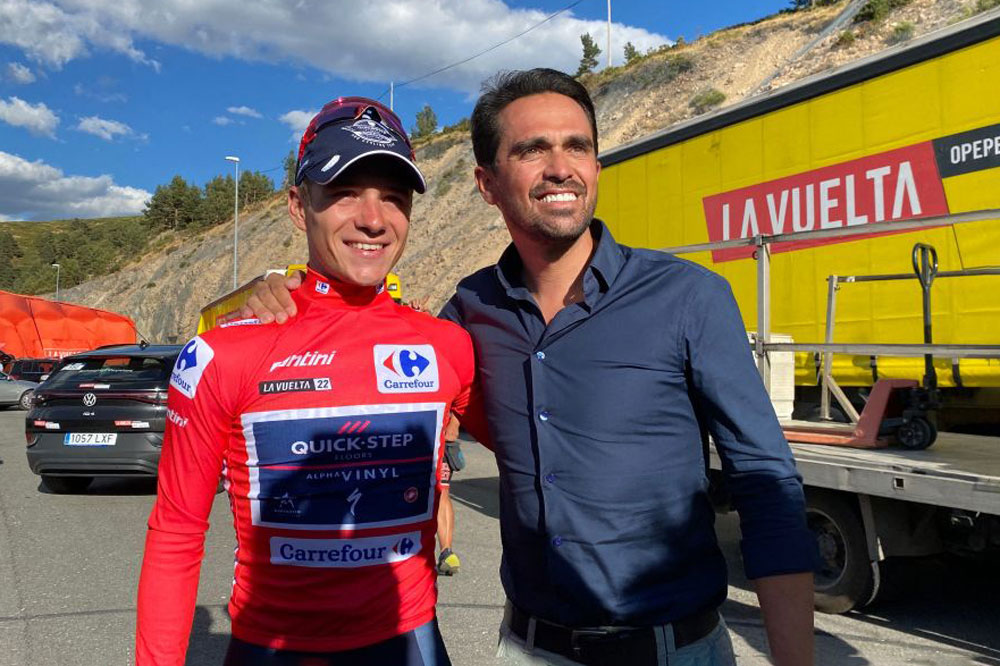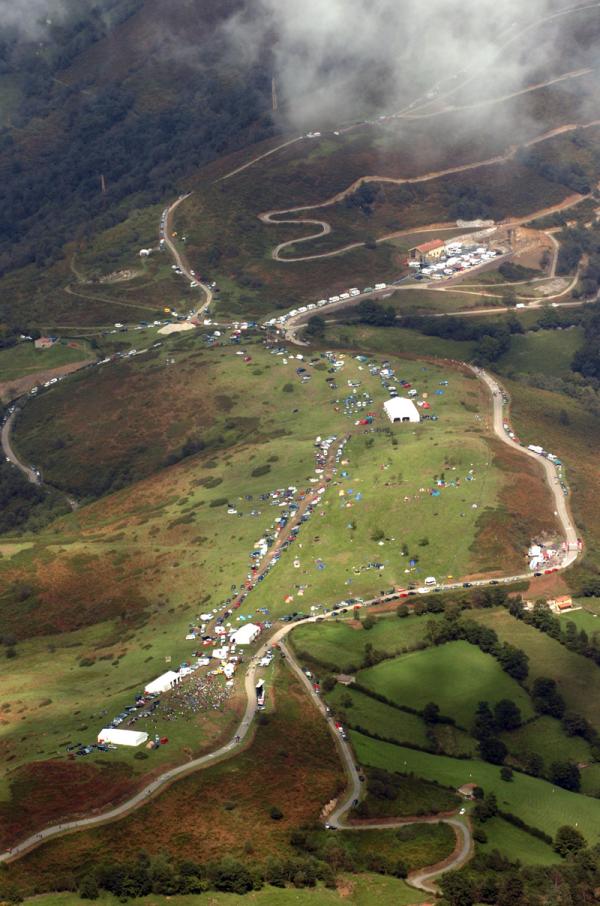Analysis: 2023 Vuelta a España returns to its climbing roots
Historically crucial time trial in Valladolid unlikely to change overall outcome

“The mountains form part of the DNA of the Vuelta a España,” race director Javier Guillén told Spanish sports daily AS on Tuesday evening, and to judge by the route that organisers Unipublic have produced for 2023, it’s very hard to disagree.
After 2022’s single hors categorie ascent to Sierra Nevada, this year there will be no less than five, two of them well-known ‘monster’ ascents of the Tourmalet and Angliru. The Pyrenees, completely missing from the race in 2022 and 2021, are back in their toughest Vuelta format since at least 2015. And rumours of there being ‘only’ eight summit finishes in 2023 proved to be an underestimate: in fact there are 10, an average of almost 50 percent of all the stages.
2023 is not just about the revival of relatively-recent Vuelta traditions like the plethora of uphill finishes, though. Organisers have delved much deeper into the race history books with the revival of a mid-race time trial through the flatlands and vineyards in the region of Valladolid.
The time trial stage in Valladolid, a city visited on 64 previous occasions by the Vuelta, is one that has proved vital to the overall outcome of the race on multiple occasions. To name but a few - in 2010 for Vincenzo Nibali en route to his first Grand Tour win, in 1994 for Tony Rominger by winning the prologue in Valladolid and then leading the race from end to end, in 1989 for Pedro Delgado when he took an utterly unheralded time trial victory, and even as far back as 1964 for Raymond Poulidor.
But if Pou-Pou was able to secure his only Grand Tour overall victory as much thanks to the Spanish contenders squabbling amongst themselves as to his time trialling skills, 59 years later and with the Tourmalet looming fast on the horizon on stage 13, the Valladolid time trial will likely fade quickly in the race’s collective rear-view mirror. And for Spanish climbers like Enric Mas, three times second in the race, that certainly doesn’t present a problem.
“I’m absolutely delighted with the route,” the Movistar racer said, “I’ll settle for a ‘draw’ in the Valladolid time trial, if you bear in mind the time Remco [Evenepoel, 2022 Vuelta winner] took on us that day in Alicante’s race against the clock.
“Races recently have been decided there [in time trials]. The Tourmalet is a really difficult stage. I’m grateful that the Vuelta does stages like that, because personally, they suit me down to the ground.”
Any similarities to the 2022 Vuelta route, then, barring the last day’s ceremonial stage into Madrid on September 17, seem purely coincidental. It's true there is an opening team time trial in Barcelona, just as there was in Utrecht in 2022, but at 14 kilometres rather than the 23.2km in Holland’s opening TTT stage, barring major disaster, it’s barely likely to impact on the GC favourites. Stage 2's short, punchy ascent to Montjuic Park in Barcelona could arguably do much more damage.
Both of these pall into insignificance, long-term in any case, compared to the likely effects of stage 3’s very mountainous incursion into Andorra. The double ration of first-category climbs and a summit finish in Arinsal on stage 3 both puts the first climbing challenge of the 2023 Vuelta on a par with the Giro’s early ascents of Mount Etna, and also means the 2023 race will be in the Pyrenees for the Vuelta for a record-breaking four days in total.
Get The Leadout Newsletter
The latest race content, interviews, features, reviews and expert buying guides, direct to your inbox!
But if Giro routes tends to ease off after the Etna, in the 2023 Vuelta the mountains and summit finishes keep on coming and coming, and if Andorra's climbs are almost all well-surfaced and wide, none of what is in store for the Vuelta peloton after its return on stage 4 is such straightforward climbing.
As any riders who formed part of the 2019 Vuelta will know, stage 5 to Javalambre in the remote sierras of Teruel includes a nightmarish approach of narrow, undulating roads and then a severely-exposed, staircase-like ascent to the astronomical observatory at its summit. Then the ‘wall of Cati’ on stage 8, only two kilometres long but with some unbearably steep segments, will once again slice through the peloton and oblige the GC favourites to remain ahead.
Last but not least in the first week, stage 9, albeit much more straightforward than stage 8, has the kind of grinding final ascent to Caravaca de la Cruz that riders like Primož Roglič (Jumbo-Visma) love to ambush the opposition. This segment of the Vuelta is likely, too, to be the hottest of the entire race, making for an ultra-arduous beginning.
Mountains and more mountains

The second week offers no respite whatsoever from the climbing challenges, culminating in two brutally difficult stages in the Pyrenees. For all it is only 134 kilometres long, stage 13 to an unprecedented Vuelta summit finish at the Tourmalet, an ascent which has written countless pages of Tour de France history, undoubtably constitutes the first ‘Queen Stage’ of the race.
The addition of a second stage 24 hours later, running principally through the French Pyrenees, generally much harder than their Spanish counterparts, and in this case containing the notoriously challenging Larrau, arguably means the 2023 Vuelta will have two back-to-back 'Queen Stages' - and a third to come.
Past history at least says the presence of the Angliru in any Vuelta a España shapes the entire race, and in 2023 the inclusion of ‘the giant of the north’ deep in the mountains of Asturias on stage 17 will likely be equally influential. On this occasion, though, with so much climbing throughout. In 2023, the Angliru is followed by two very tough stages to the Cruz de Linares on stage 18 and through the Sierras of Guadarrama on stage 20, so its precise role will be much harder to predict.
In fact the Angliru embodies what is probably the central conundrum of such an ultra-difficult Vuelta, defined by some Spanish media as the hardest of its history. With 13 first-category climbs and five at hors categorie, not to mention the deeply unusual (and interesting) format of the penultimate stage featuring 10 third-category climbs on the only day where the riders will cover more than 200 kilometres, working out a strategy to best tackle the race will likely prove even more difficult than usual.
Might it be better to hit the ground running in the first week, say with its four summit finishes, and then try to stay in contention in the second and third weeks? Or is it a better strategy to limit the losses early on and hope to hit top race condition on the bigger ascents of the Tourmalet and Angliru?
Most riders will probably opt for the latter, but there’s are a couple of catches. In times past, the Angliru has proved to be so steep any attack carries a massive toll, and it's almost impossible to open up time gaps. This problem is a perennial one, often meaning the harder the climb the less spectacle it actually creates. But the second problem is specific to 2023 - the ‘hardest Vuelta in history’ coincides with the re-scheduling of the Worlds to August, meaning many top riders, should they be heading for Spain, will have already hit top condition for Glasgow. By late August, their form could be waning considerably.
What looks on paper, barring that stage 20, to be a very traditional mountain-fest of a Vuelta, then, could end up being one of the most unpredictable, and with a field of contenders that will be a real mix of riders clinging onto Worlds form and those, normally much fewer in number, who have prepared specifically for Spain's Grand Tour.
As ever, more than the route, it’s the peloton that will have the last word on how the 2023 Vuelta plays out next summer.
Alasdair Fotheringham has been reporting on cycling since 1991. He has covered every Tour de France since 1992 bar one, as well as numerous other bike races of all shapes and sizes, ranging from the Olympic Games in 2008 to the now sadly defunct Subida a Urkiola hill climb in Spain. As well as working for Cyclingnews, he has also written for The Independent, The Guardian, ProCycling, The Express and Reuters.
